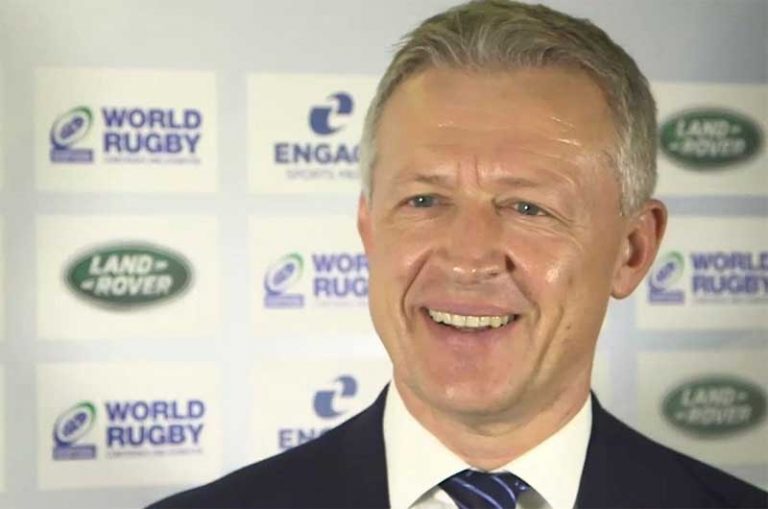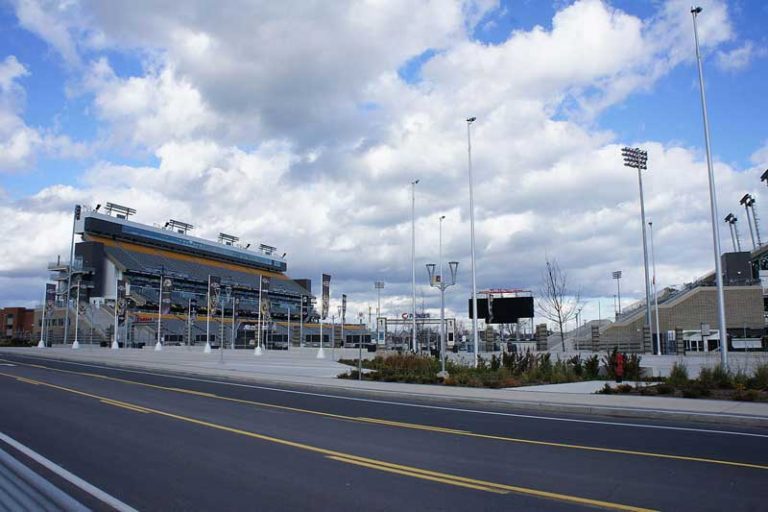
Following is the second in a series of open letters to residents of Calgary, and those citizens in other cities who are contemplating Olympic bids.
Dear Calgary,
Thanks for your interesting responses to my last letter, they show that you are really thinking about your potential Olympic bid – but still struggling with the decision you will face when casting your plebiscite ballot November 13. In the previous letter I reviewed how Games are budgeted, this time I’ll write about what to expect in return.
You’ll often hear the Games described as a “two-week party,” and that nickname typically originates from the opponents of the Games because, really, it is a dramatic understatement.
For better or for worse, the Games are so much more.
Sure, from the opening to the closing ceremony of the Games there are 16 days – a little more than the “two-week” appraisal. But that’s not really what I’m writing about here.
From the beginning of the bid process until the closing of the Paralympic Games, it is a nine-year journey. And it’s a process that can reap returns even if the bid is lost – but more on that later.
Most people understand the benefits of hosting the Games to be the legacies – both tangible and intangible. Physical legacies such as new permanent sport venues and transportation infrastructure certainly fit that bill, but I caution against adding these to the equation – something I covered extensively in my previous correspondence. Though many see the Games as a catalyst to completing these key projects – if they are legitimately needed, they can be developed more efficiently outside of the Olympic mandate.

Intangible benefits can include an uptick in economic activity, including tourism, beginning from the awarding of the Games to the city. Of course, there are several contradicting studies by economists and others that offer inconsistent conclusions on this matter, so consider these at your own risk.
During the final months ahead of the Games, the Olympic host will stage test events – international World Cup and championship events – adding to the event schedule in the city – and the sport tourism that Calgary knows all too well.
For the PyeongChang 2018 Games there were 26 test events, not a trivial number. Though Calgary already hosts a number of similar events due to its 1988 legacy, a 2026 Games would refresh the facilities allowing these types of events to continue well into the future.
There are also other forms of Games-related economic input that begin well before the lighting of the cauldron, some I participated in first hand. During the bidding cycles and the organization period ahead of the Games I visited PyeongChang and other areas in South Korea at least six times as a journalist. That meant spending money on hotels, meals, flights – and contributing to the collection of sales tax. And it wasn’t just me – journalists from around the world attended various events and meetings – along with officials belonging to sport federations, national Olympic committees, Olympic corporate partners and so many other businesses that get involved in the Games. This activity endures for years.
Around the 16-day Games themselves there is a roughly two-month window of activity where thousands of Olympic-related guests are present in the city – more if you include athletes that arrive weeks earlier for training and acclimatization. Many stakeholders arrive days before the opening of the Games. Others remain after.
Dear Calgary: Legacy or Reduced Risk, How To Navigate Your 2026 Olympic Bid Plebiscite
And we mustn’t forget the Paralympic Games that follow just days after the Olympic Cauldron is doused – and the cultural festival that is celebrated throughout both of the mega-events.
It really is much longer than “two-weeks.”
Calgary did not host the Paralympics in 1988, marking the final time the winter edition of the event was held in a different city than the Olympics.
The Paralympics, that for PyeongChang had a line-item cost of USD $27,545,000 (only 2.8 percent of the total Olympic and Paralympic Games operating budget), offer an immediate reuse of some of the Olympic facilities and overlay. Though the event offers less exposure and economic activity than the Olympic counterpart – a valuable physical legacy is often left behind to make the city more livable for those with different abilities.
To accommodate Paralympians and others attending the Games, the building of more accessible structures and upgrades to existing facilities for the Games provide the necessary enduring infrastructure that often otherwise gets overlooked. And more importantly, greater exposure to those with different mobility needs gives the overall population a better understanding, and helps build a culture of inclusivity that is now expected in modern growing cities.
There is great opportunity and certain risk, but the next chapter is unwritten.
And while speaking of building cultures – the Olympics will facilitate the creation of an army of eager volunteers, and that can result in a lasting culture of volunteerism. Post-Games, these volunteers often continue to offer help to local community sports organizations and other social services.
There is also one more possible key benefit, one that is so taboo to discuss in current Olympic circles that I almost dare not mention it… but I will. The Games could turn a financial profit.
I know, you think I’m drinking the Kool-Aid – but lets explore this a bit. Calgary, and Western Canada, are already rich with Winter Games facilities, so If new construction can be removed from the budget – an operational surplus is a real possibility.
Vancouver’s 2010 Games broke even, according to financial records. But the Salt Lake City 2002 Games generated a surplus that, after all accounts were squared, created a USD $30 million Utah Athletic Foundation used to maintain the physical legacy of the Games for years to come.

You may remember that the same thing happened in Calgary after the 1988 Games – a surplus from the operational budget created a CAD $66 million (USD $51 million) endowment to create what was later named WinSport, an organization tasked to manage Olympic venues still in use today.
With the International Olympic Committee (IOC) introducing scores of new cost-cutting measures that they say could cut hundreds of millions of dollars from the budget, a record high cash and in-kind IOC contribution of USD $925 million, and evidence that Tokyo 2020 Summer Games will set historic highs in sponsorship revenue – a well-manged OCOG (that’s the Olympic Games Organizing Committee) could really generate a surplus and create a new endowment for the host city.
Clearly, scores of you will immediately laugh this off. After two consecutive economic disasters of Olympic proportions – namely Sochi 2014 and Rio 2016 – it will be easy to dismiss the idea that the Games can turn a profit.
Even more recently it has been reported that despite turning an operational profit, PyeongChang in South Korea is suffering from an “Olympic hangover” – a massive debt it has incurred by organizing the 2018 Winter Games. Much of this, for the host province of Gangwon, is due to the construction of three venues that have no broader purpose. The speed skating rink, the new ice hockey arena and a sliding track that the International Olympic Committee (IOC) urged the organizers not to build in the first place, do not have a sustainable legacy plan.
There’s huge risk in building Olympic-specific facilities and infrastructure. So the IOC says – don’t do it.
And they really mean it. Paris was awarded the 2024 Summer Games based on a risk-averse project that only requires the construction of an Olympic Village, a project that would transition to needed housing after the Games, and an Aquatic Centre. Los Angeles will host a “no-build” Games in 2028 without constructing a single new venue – and will house all athletes, officials and the media on well-appointed University campuses.
And the IOC was willing to negotiate with Los Angeles officials to lock in the safe, sustainable host city 11 years in advance.
As part of an agreement to host the 2028 Olympic Games, LA Mayor Eric Garcetti asked for and received an interest-free advance on part of the IOC’s cash contribution to the project in order to build legacies years before the Games’ opening ceremony. In January 2018, cash installments that will amount to USD $180 million (representing only 10 percent of the total contribution) began to flow into the Los Angeles parks and recreation department to provide free sports to the city’s youth. In ten years, they could be Olympians – representing the Games’ legacy at the Games themselves.

Many of the recipients of these funds will be the underprivileged in the community. A similar program borne of the LA 84 Games surplus legacy (after the Games were complete) produced top athletes like Tennis superstars Serena and Venus Williams.
Now I’m not saying that an Olympic bid will produce superstar athletes, nor is that my point. But millions of dollars funding for youth sports would be an excellent parting gift from the so-called two-week party.
But what about the physical legacy? There have been discussions around jump-starting some necessary projects and using the Olympic cash contributions from partner governments to help fund them. Calgary wants a new arena for the NHL’s Flames, as well as a field house sport complex and affordable housing.
The Olympic Village has always been the most challenging piece of any Games concept – it’s rare that any city has thousands of adjacent units readily available for a short period unless they’ve been newly constructed. Calgary has already developed a plan and has a need for low-cost housing, so if managed properly this construction project could provide a valuable legacy. But there is always additional risk when linked to the time-boxed Olympics, and it artificially increases the perceived overall Games’ costs.
There’s also a risk that things could change over seven years, and before the construction commences. Costly accommodations that were built for athletes and the media for Rio 2016 remain empty and unsold two years after the Games – the previously thriving Brazilian economy collapsed just months after the Games were awarded.
The other venues don’t need to be linked to the Olympic project if they can be financed and delivered on their own accord. If they can’t – they shouldn’t be built.

As I suggested at the outset, there are legacies from bidding itself, even if the Games are awarded to another city instead. Many cities, when forced to the task through an Olympic bid opportunity, do some their best and most creative city planning.
Toronto bid unsuccessfully for both the 1996 and 2008 Summer Games and proposed plans for the revitalization of the city’s waterfront each time. Now, many of the designed improvements have been implemented – even without the Games, and the city was ready to host the Pan Am Games in 2015.
Bids also force cities to take detailed inventory of their existing sports facilities, allowing them to optimize the value and use of the venues and examine plans for the future. Calgary has already done this through the bid exploratory committee.
Funding a bid sometimes amounts to the funding of detailed city planning that might not otherwise occur.
Once again, I’ve served up some of the benefits and pitfalls of bidding for an Olympic Games. You should be well aware of the historical failures of hosting the Olympic Games, but also cognizant of the rapidly changing landscape of the bidding process.
There is great opportunity and certain risk, but the next chapter is unwritten. It’s time for smart cities to choose how they will spend their nine year journey known as the “two-week party,” without simply following past examples.
And its up to you to decide if you want to take that journey.
Good luck! Let me know what other questions you may have.
Sincerely,
Robert Livingstone
GamesBids.com
Twitter: @enotsgnivil


